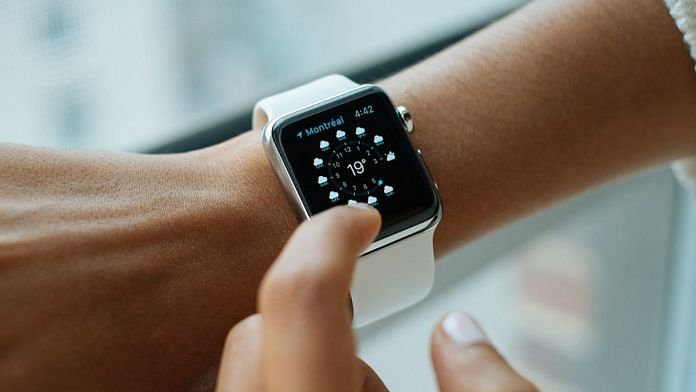Smartwatches existed before the Apple Watch arrived on the scene in 2015, but they were more a novelty than a thing seen on everyone’s wrist. It was the first major new product developed under CEO Tim Cook’s reign, revolutionising how we see time.
When the Apple Watch came out, success was far from certain. It was expensive and didn’t hold value like a Rolex or Omega. But Apple chugged away, focusing relentlessly on fitness features and a myriad of sensors, tying it even closer to the iPhone while steering the entire tech industry in that direction.
Cut to today, and everyone has a smartwatch. Samsung makes the stellar Galaxy Watch, while Google unveiled the Pixel Watch, which is now being sold abroad. It even owns the US smartwatch giant Fitbit. Google’s Wear OS platform is pervasive, like Android. Anyone who wants to make a smartwatch ends up using it —including traditional wristwatch makers like Fossil and Tag Heuer.
Then there are Chinese players like Oppo, Xiaomi and OnePlus, who make their operating systems and tie them with iOS and Android apps.
Also read: Battery about to die—if this message panics you, buy Pixel 7 Pro, S22 Ultra, iPhone 14 Plus
Apple to Samsung, there’s a smartwatch for everyone
In 2022, Apple introduced the most audacious Apple Watch line.
It launched the Apple Watch Ultra, a bigger, fancier and more hardcore version of the world’s most popular wristwatch. It promises 36 hours of battery life—a godsend as it is a task to charge most other smartwatches every 18 hours. It is also a good-looking alternative to professional wristwatches, like the one Gramin makes with its advanced functionality.
The Apple Watch Ultra boasts improved water resistance, remote SOS capability, as well as bigger, larger, and flatter sapphire screens that look exquisite with a titanium frame—provided your wrists are big enough.
The big new feature, however, is the body temperature scanner that can not only track women’s menstrual cycles, but also actively track body temperatures.
Make no mistake, though. The Apple Watch Ultra is perhaps not the watch you want to wear at a black tie event. It can be argued that the standard Apple Watch Series 8 works better, and if you’re an iPhone user on a budget, the new Apple Watch SE 2 is the best deal.
But what if you have a phone from Apple’s arch-rival Samsung? Well, you still get wonderful options in the new Galaxy Watch 5 and Galaxy Watch 5 Pro. Functionally, they are very similar to Apple’s products, but look different and—arguably—better. These are round watches, and the Pro model provides you with the goodness of titanium—a cocktail of Google’s Wear OS and Samsung’s Tizen.
The experience is fast and fluid. The watches work like a charm with Android phones and provide even deeper integration if your phone is a Samsung Galaxy.
In fact, both Apple and Samsung provide mainstream users with the best products in the business, as they have the most reliable heart rate scanners, accurate step counting, life-saving ECG functions, blood oxygen sensors and a broad ecosystem of apps.
Also read: Listen: Looking for noise cancelling earbuds? The serious ones will cost at least Rs 5,000
Budget wearables
While the Apple Watch has thrived, it has also spawned a new wave of affordable wearables. AmazFit is one such brand. With its outstanding smartwatch range, it straddles the fine line between design, functionality and budget.
The AmazFit GTR 4 starts at Rs 16,999 and provides a classic round dial with decent fitness apps and notifications support. It has a long battery life—as long as two weeks in the low power mode—and support for an assortment of sensors in a package that works with both iOS and Android. I recommend it even over last year’s OnePlus because of its sheer reliability.
And if you like the Apple Watch design and want a square dial, the Amazfit GTS 4 is the one to go for. It offers similar capabilities for the same price but in an Apple Watch-like design. There is also the GTS Mini, which costs half as much and looks quite the same. However, investing in this watch means compromising on the quality of fitness tracking, battery life and display technology.
Also read: iPhone to Xiaomi—5G rollout is a long way off in India. But Airtel, Jio won’t tell you that
Niche options
For fitness fiends who want a smartwatch for fitness tracking only, I recommend the Fitbit Versa 4 and Sense 2. Fitbit has the best repository of fitness training programmes, and it hooks up well with both iOS and Android. The Sense 2 is meant for people who want the ECG function and the skin temperature scanner, but other than that, it is more or less the same as the Fitbit Versa 4.
Of course, the new option for people into extreme sports is the Apple Watch Ultra, but the Ultra has been devised to counter what Garmin has been doing in the market for years. It is the go-to brand for professional athletes, which is why I choose the Garmin Instinct Solar.
It will attract people who like the design of the iconic Casio G-Shock, but it has, by far, the most accurate heart rate scanner and barometer metrics system on a smartwatch. It provides solar charging that can range between 24 hours to 30 days, depending on how you use it. It is more of a sports watch than a smartwatch and is meant for people who are serious about their use case.
Smartwatches are no more engines for phone notifications and basic timekeeping. They have evolved into full-fledged fitness trackers and tools for professional athletes. And as they have become ubiquitous, the technology has also trickled down to more affordable price points even as more advanced features keep propping up at the upper echelons of the market.
Sahil Mohan Gupta is a Delhi-based technology journalist. He tweets @DigitallyBones. Views are personal.
(Edited by Zoya Bhatti)



